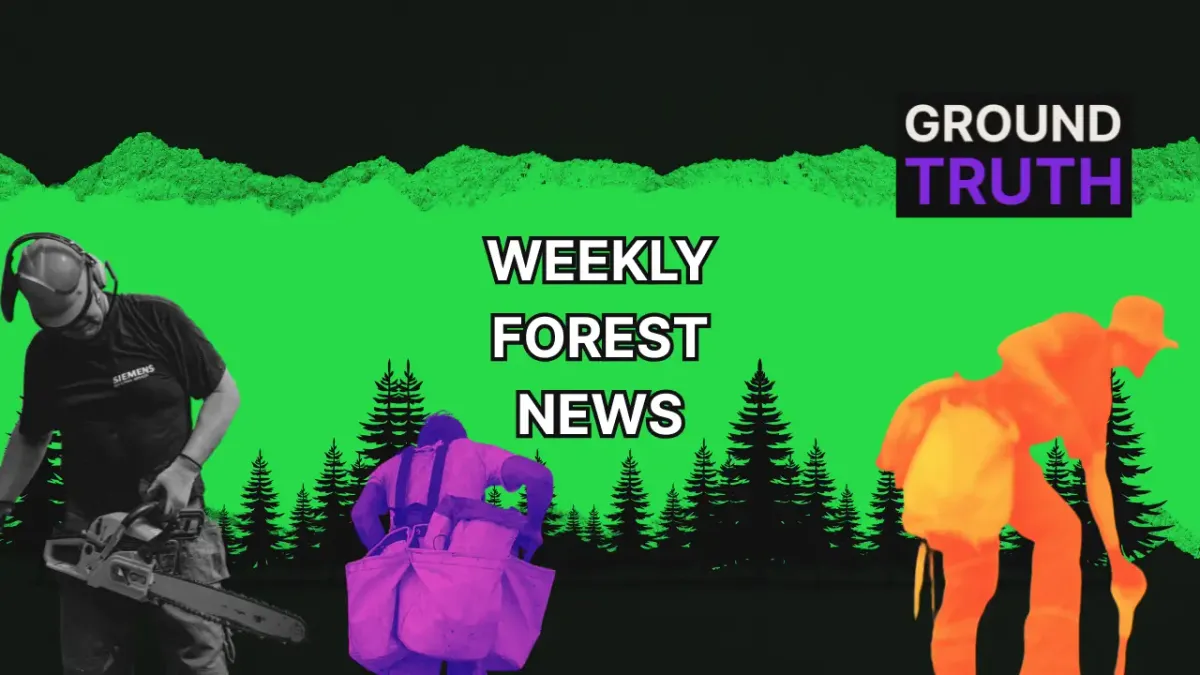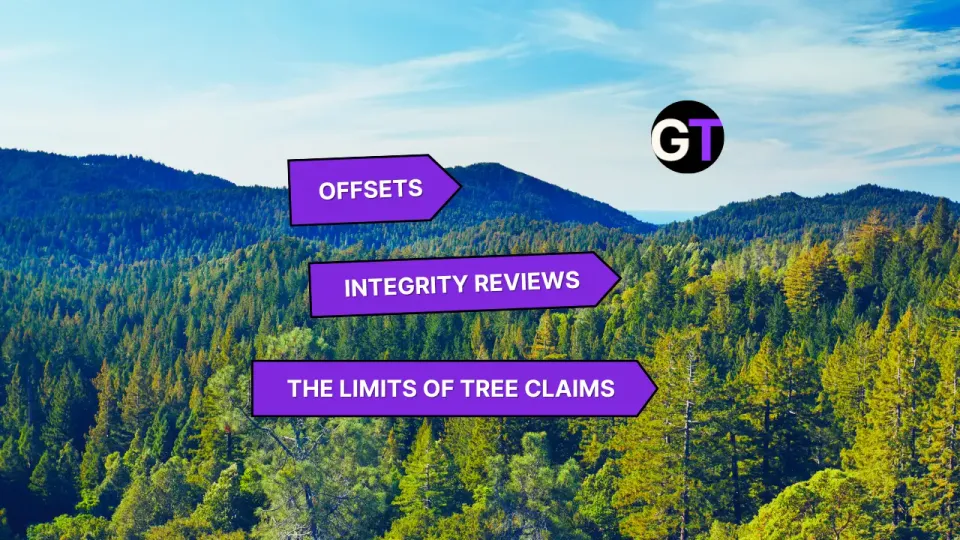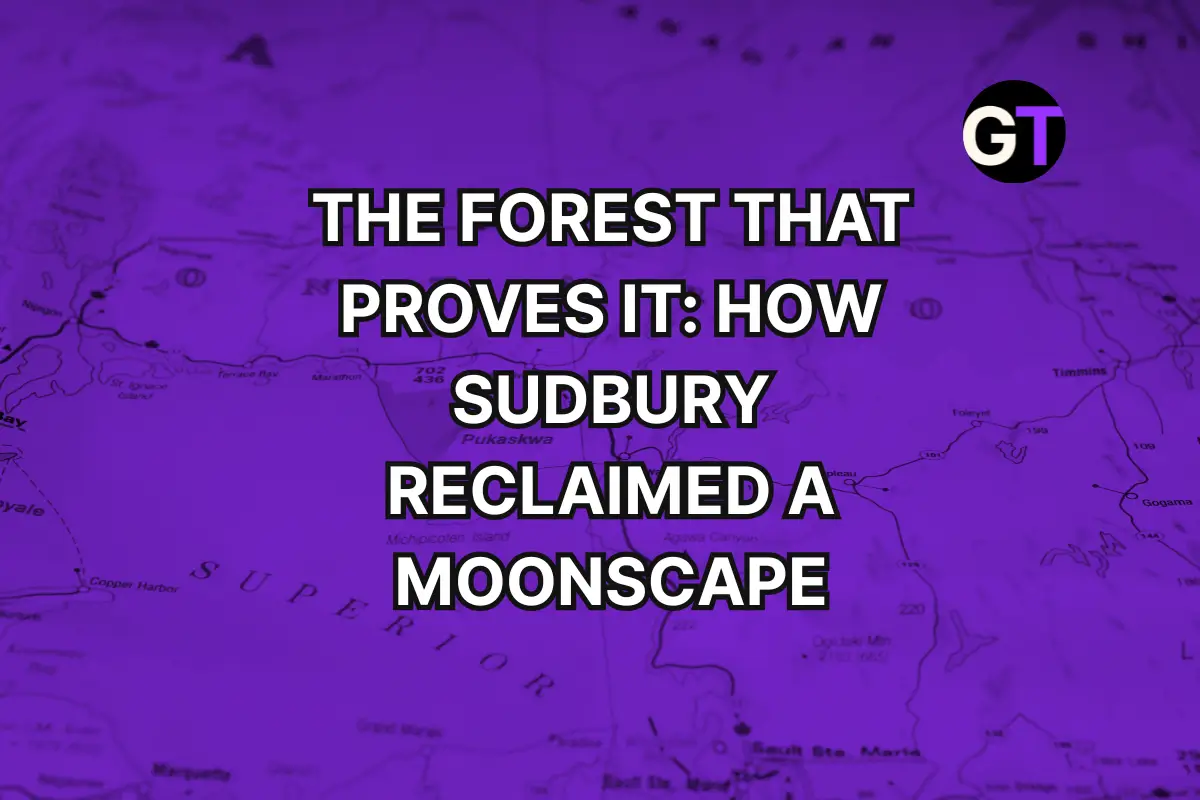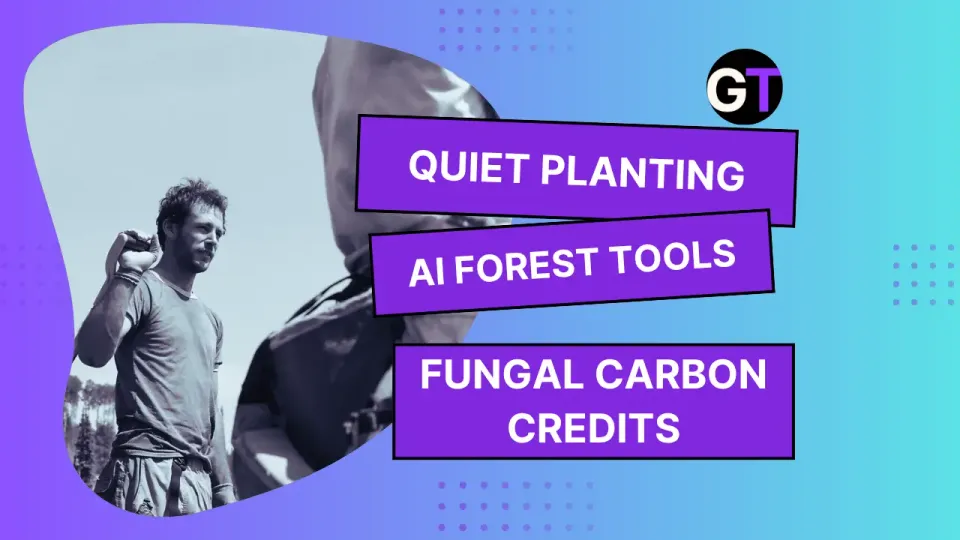Weekly Forest News, May 9
Ecosystem complexity, mossy oil wells, handheld LiDAR, low carbon prices, and bold reforestation plans—this week in forest news.

Restoring Ecosystem Complexity: Nature’s Blueprint for Resilience
A new paper by Tanentzap et al. dives into the wild world of ecological complexity, arguing that restoring ecosystems isn't just about bringing back trees or species—it’s about reviving the tangled web of interactions, feedback loops, and emergent behaviors that make nature tick. From dynamic feedbacks in seagrass beds to self-organizing herds of rewilded bison, the authors say we need to stop thinking in checklists and start thinking in systems.
💬 Can embracing complexity help us build ecosystems that don’t just survive, but adapt and thrive?
👉👉 Read more in Science Direct
Bringing Moss Back: A Greener Way to Retire Oil Wells
In Alberta, researchers from the University of Waterloo are swapping oil rigs for moss mats, piloting a restoration technique that turns decommissioned oil well pads back into functioning peatlands. By lowering well pad surfaces and replanting native moss, the team mimics the natural hydrology needed to revive carbon-rich wetlands—offering a scalable, climate-smart fix for Canada’s scarred boreal landscape.
💬 Can moss really outmatch machines when it comes to cleaning up oil’s legacy?
👉👉 Read more in Ecological Engineering
Shipping Containers, Saplings, and Sustainability Theater?
Vertical forestry just got a visibility upgrade. Latvia-based Carbon Less Future has unveiled a mobile, sensor-packed, containerized tree-growing system that can produce up to 33,600 saplings per cycle—complete with public-facing observation walls and app-controlled climate precision. Designed for energy efficiency and ESG bragging rights, it's reforestation you can see, touch, and rent. But with the U.S. planting over a billion seedlings annually, the real question is scale: can boutique nurseries like this punch above their weight?
💬 Will transparent, techy tree nurseries help democratize reforestation—or just pretty up the margins?
👉👉 Read more at FreshPlaza
Green Timber Dreams: NZ Greens Eye Kinleith Mill for Public Mass Timber Hub
The New Zealand Green Party wants to take Kinleith Mill public and pivot it to cross-laminated timber (CLT) and biofuels. Their $8B Green Industrial Strategy includes 35,000 state-built homes and a Central North Island timber hub. With job losses mounting at the mill, co-leader Chlöe Swarbrick says it's time for public ownership—and a greener construction economy.
💬 Is this the future of forestry, or just another political plank wrapped in pine?
👉👉 Read more at Wood Central
Lidar Gets Grounded: Rethinking Forest Inventory
A new study led by Juan Alberto Molina-Valero and co. digs deep into how close-range LiDAR (yes, the kind you can tote around) stacks up against traditional forest inventory methods. Testing various inference models—including a statistical supergroup called 3pHMB—they found that ground-based scanners like TLS can reduce error in volume estimates when paired with smart sampling.
Less bias, better coverage, fewer tree-hugging caliper battles? Maybe it’s time we let LiDAR handle the heavy lifting.
💬 As the international restoration movement flocks toward remote sensing for MRV, are we forgetting the irreplaceable value of ground-truthed data?
👉👉 Read more in Science Direct
Can Forests Save the World—One Hectare at a Time?
In a globe-spanning deep dive, Cubbage et al. explore whether any country can plant 10 million hectares of forest by 2030. Spoiler: probably not. But the study identifies the best bets—Argentina, Brazil, Indonesia, India, Vietnam—where large-scale tree planting could still seriously boost wood fiber supply and carbon storage. The catch? Big dreams meet messy realities: land tenure drama, weak timber markets, and dirt-cheap carbon prices (hello, $5.80/ton). Still, forests remain a low-cost climate hero—if we can figure out where and how to plant wisely.
💬 What would it take to scale ARR from cheap offsets to high-value climate assets?
👉👉 Read more in Science Direct
Companies Profit, Forests Fall: The Forest 500 Report Card
Global Canopy’s latest Forest 500 report is in, and it’s not exactly a gold star moment for the private sector. Of 500 companies tied to deforestation-linked commodities, only 3% have strong, actionable commitments. Meanwhile, 34% are still stuck in denial—or worse, indifference.
From beef to rubber, supply chains are still riddled with forest risks. The tools to fix it? Already here. The will to act? That’s the trillion-dollar question.
💬 Can transparency and pressure finally shake the laggards into action?
👉👉 Read more in Forest 500
California Slashes Green Tape, Speeds Up Restoration Projects
California’s Cutting Green Tape initiative is cutting through the bureaucratic muck that leads to greenfreezing—when well-meaning environmental projects stall in endless permitting. Since 2021, the program has fast-tracked 500+ restoration efforts, reviving 200,000 acres and improving 700+ miles of streams, all while saving $10 million in permitting costs. With a new all-in-one Restoration Management Permit now live, projects like Little Butano Creek are restoring habitats for salmon, frogs, and turtles—without drowning in paperwork.
💬 Is this the cure for greenfreezing we’ve been waiting for—or just a California dream?
👉👉 Read more in CA.gov
Madagascar’s Mega Reforestation Move: 4 Million Hectares by 2030
At the 2025 UN Forum on Forests, Madagascar pledged to restore 4 million hectares of forest by 2030, aligning with AFR100 and Bonn Challenge goals. Backed by a new National Committee for Afforestation and Reforestation, the plan aims to reverse decades of deforestation while spotlighting inclusive forest governance. Youth and Indigenous groups pushed for early engagement in policymaking—but funding gaps and visa barriers continue to limit their voices at the table.
💬 Will Madagascar’s reforestation plan include transparent, publicly accessible data on what’s planted, where, and whether it survives?
👉👉 Read more in UNFF20
Louisiana’s First Water Quality Credits Sprout from Cypress Roots
Restore the Earth Foundation just scored Louisiana’s first certified water quality credits—thanks to reforesting 18,800 acres of cypress at Salvador Wildlife Management Area. The project cut over 31,000 pounds of nitrogen and 400+ pounds of phosphorus, launching the state’s Water Quality Trading Program. It's a win for wetlands, but can restoration scale without sidelining regulatory rigour?
💬 Trading credits for cleaner water: climate finance breakthrough or just a promising pilot?
👉👉 Read more at Restore the Earth Foundation
Forest Complexity Cools More Than You Think, Study Finds
A new study in the Journal of Forestry Research reveals that forests with complex structures—think diverse canopy heights, layered foliage, and undulating terrain—are surprisingly effective at cooling the land. Using satellite and LiDAR data from central Germany, researchers found that “box-dimension” (a fractal measure of forest complexity) was a top predictor of cooler surface temperatures. Translation? Managing forests for visual (and vertical) richness isn’t just an aesthetic choice—it’s climate-smart design.
💬 Could boosting forest complexity be the stealth strategy in climate adaptation?
👉👉 Read more at Journal of Forestry Research
Pan-European Forest Maps Now Go High-Res with Satellite + Ground Data
A new EU-backed mapping initiative has produced the most detailed forest maps yet, covering 40 countries with 10-meter resolution data on timber volume, biomass, and tree types. Built from over 150,000 National Forest Inventory plots and Sentinel-2 imagery, the maps aim to support model-assisted forest monitoring, not direct estimations. They're a big leap forward—just don’t try summing them pixel by pixel.
💬 Can Europe’s new forest maps reshape how we monitor carbon and biodiversity?
👉👉 Read more at Data in Brief

Edited by Chris Harris

This work is licensed under a
Creative Commons Attribution 4.0 International License.





